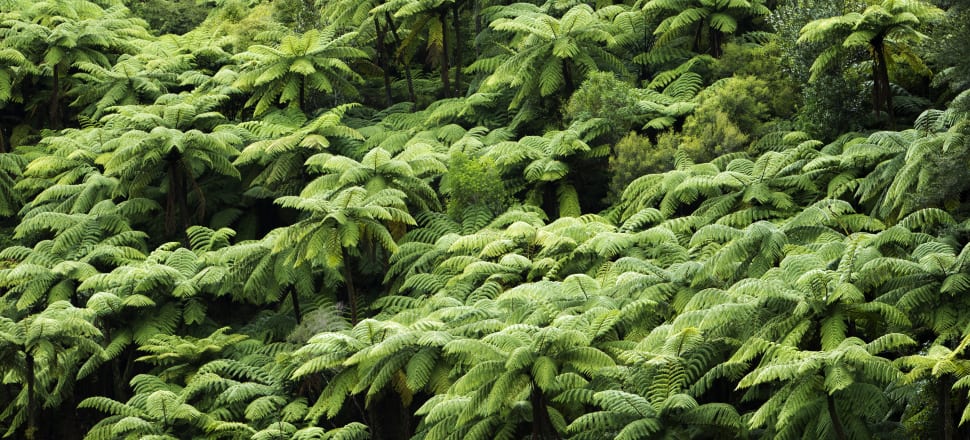
New Zealand urgently needs a sustainable carbon strategy focused on native forests to provide long-term carbon sequestration without the need to buy dubious offshore offsets
Opinion: A recent article in the Guardian based on research into Verra, the world’s largest global carbon-offsetting scheme, reveals more than 90 percent of its tropical rainforest carbon credits are worthless, making no positive impact on climate change.
In a subsequent article, the Guardian shows that the fossil fuel company Shell was heavily involved in setting up Verra and its rules. Like New Zealand, Shell has placed carbon offsetting at the heart of its climate change strategy, although the research indicates that many of the claims made about the efficacy of such schemes cannot be trusted.
The implications of this research for New Zealand’s carbon strategy are fundamental. At present, New Zealand relies heavily on carbon offsetting to meet its Nationally Determined Contribution (NDC) under the Paris Agreement, through the purchase of international credits and through the Emissions Trading Scheme (ETS).
On both scores, New Zealand’s strategy is fatally flawed. While the government proposes to make up shortfalls in meeting our NDC with the large-scale purchase of international credits, given the research into Verra and its ‘phantom credits’, it is highly likely that in future this kind of offsetting will be tightly controlled or excluded under international conventions. This would leave New Zealand unable to meet its carbon targets.
Worse still, New Zealand’s ETS relies almost exclusively on exotic monocultures for carbon capture. Given the biodiversity crisis, and the growing risks of fire, disease and other environmental impacts of tree plantations, the use of this kind of offsetting has been condemned by the IPCC as among "the worst practices and negative adaptation trade-offs" for tackling climate change.
READ MORE: * NZ’s farmers’ global customers demand more rigorous climate response * Anne Salmond: The folly of carbon farming with pine trees
Again, it is likely that in future, the use of exotic monocultures for carbon capture will be excluded from counting towards NDCs under the Paris Agreement. In both of these respects, New Zealand’s climate strategy is high risk, and exposed to international condemnation.
Like Shell’s role in setting up Verra, in New Zealand forestry interests have been heavily involved with the ETS. In the ETS, for instance, the very high rewards given to monoculture pine plantations ignore the carbon emissions involved in site works, planting, trimming, harvesting, transporting and processing the logs, and the costs of the environmental devastation associated with plantation forestry.
According to an FAO study, the global forestry supply chain emits about twice as much carbon as it sequesters. Given the length of New Zealand’s forestry supply chain, with most logs being sent unprocessed to China or India, and the short life of most of their products, a rigorous life cycle analysis of its emissions profile is likely to prove sobering.
In addition to the flawed nature of offsets and the use of exotic tree monocultures that undermine New Zealand’s carbon strategy, there are also risks and liabilities that these plantations pose to local communities and landscapes.
While exotic tree monocultures have an important role to play in New Zealand as a sustainable source of timber for construction and other products, industrial monocultures of short-lived trees, whether harvested or not, should not be relied on for long-term carbon capture.
During recent environmental disasters in Tairāwhiti, Tasman and elsewhere, where slash and sediment from poorly managed harvesting operations destroyed houses, fences, roads, bridges and paddocks, ravaging landscapes and communities, ratepayers and taxpayers are again left to pick up the costs. The fines imposed by the courts on forestry companies for breaches of resource consents are trivial in comparison. Locals who love these landscapes and seascapes are devastated.
At the same time, the government seems more concerned with the forestry lobby than with local people. Forestry Minister Stuart Nash recently tried to dismiss calls by community groups and the Environmental Defence Society for a formal inquiry into poor forestry practices, in the wake of the latest ecological disaster in Tairāwhiti, although Gisborne District Council has been more responsive.
Likewise, in setting up a review of the National Environmental Standard for plantation forests, Ministers have allowed forestry interests to dominate the advisory group, despite very clear conflicts of interest.
This has also been evident in a recent U-turn by government in setting the rules for the incoming Permanent Forest category in the ETS. Instead of reserving this category, as promised, for long-lived, biodiverse native forests which are highly effective in the long-term capture of carbon, ministers yielded to the carbon farming lobby and allowed short-lived, exotic monocultures of pine trees to qualify, ensuring that once again, native forests are marginalised in the ETS.
We urgently need an independent review of industrial forestry in New Zealand and what has happened in Tairāwhiti – one that is not captured by forestry interests. This review needs to consider the direct causes of the impacts that occurred during Cyclone Hale and the 2018 storm, and the underlying causes of the problems – especially in terms of land suitability for growing exotic tree monocultures. The review needs to feed directly into the review of the National Environmental Standard for plantation forests.
Like the biodiversity crisis, climate change is an existential risk to human survival, and the two are inextricably linked. While exotic tree monocultures have an important role to play in New Zealand as a sustainable source of timber for construction and other products, industrial monocultures of short-lived trees, whether harvested or not, should not be relied on for long-term carbon capture.
Instead, we urgently need a sustainable carbon strategy focused on native forests for Aotearoa. This will provide genuine long-term carbon sequestration without the need to buy dubious off-shore offsets, and help to address the biodiversity crisis and protect local communities from the impacts of climate change. Our own futures, as well as those of our children and grandchildren, are at stake.







